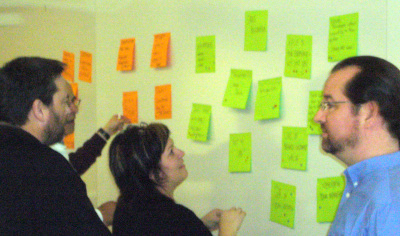 Nominal Group Technique (NGT) is a facilitation tool that helps a group quickly build a comprehensive list of ideas, issues, options or solutions, and then select the best one(s). NGT works faster than traditional brainstorming, yet generates more complete and higher quality results. NGT prevents the quieter voices from being overwhelmed and allows each participant to contribute to their full potential.
Nominal Group Technique (NGT) is a facilitation tool that helps a group quickly build a comprehensive list of ideas, issues, options or solutions, and then select the best one(s). NGT works faster than traditional brainstorming, yet generates more complete and higher quality results. NGT prevents the quieter voices from being overwhelmed and allows each participant to contribute to their full potential.
The Nominal Group Technique was developed in the 1970’s by Andre Delbecq and Andrew H. Van de Ven. The effectiveness of NGT has been validated by subsequent research.
Let’s see how NGT can be used by a scrum team to create working agreements for their scrum events and other meetings. Such agreements are often called meeting ground rules.
Read the full article…

 Chris' lastest
Chris' lastest 
